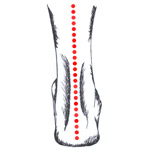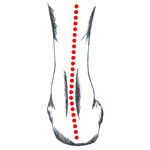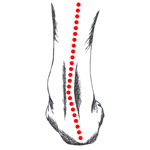So with the holidays fast approaching maybe your son, daughter, grandchild etc… has come up to you and said “I would really like a BMX” bike. Now, ideas for gifts are always great but they can be challenging as well. Especially if you are somewhat unsure of what you are looking for and BMX bikes can certainly be a bit confusing. In fact up here at the shop we get a tremendous number of phone calls and questions concerning BMX bikes from customers. So we are going to spend some time going over some of the basics in an effort to hopefully help some people out.
For many adults a BMX bike is a style of bike one would use for racing, in fact BMX actually is an acronym for bicycle motocross. However, in today’s world of BMX actual racing is only one small segment of the pie. When most kids today say they want a BMX bike, very few of them actually mean a bike they can race with. The easiest explanation for this is that BMX racing is not quite as popular as it once was and a big part of this is that it can be difficult to find a race track. The closest race track to Edwardsville is in St. Peters, MO, it is a great facility, and we have some customers that go but very few in total. Instead today most kids are looking for a bike they can do tricks with and trick riding or whatever you choose to call it is by far and away the most popular form of BMX riding today. The surge in interest in this type of riding is without a doubt due to the success of the X-Games and the internet.
The X-Games has done a great job of bringing edgy sports like skateboarding, freestyle motocross, and BMX riding into our homes. Also, with super advanced cell phones, digital cameras, and dvd camcorders, it is easy for riders to post web videos (edits) of themselves on the internet and develop a huge fan following. Just Google BMX tricks and you will find a wealth of knowledge on the topic and complete how to videos demonstrating the huge variety of tricks a rider can do.
Now that you know most kids are looking for a bike they can do some types of tricks and jumps with, what is up with all of the crazy terms they are throwing at you. BMX is a very trend driven sport and these change very rapidly, so it is almost impossible to give a complete rundown of everything, but some basics should help you out quite a bit. Many kids get focused on the weight of the bike and while the weight of the bike is important, to get a bike that say weighs around 24 or 25 pounds you are looking at a price tag in the ballpark of $600 or more. Now that would be a great bike but it would be an advanced level bike aimed at someone that is really into riding. Most entry level bikes will start around $280 and go up from there. A bike at this level from a bike shop would be considered a great first BMX bike for someone. It will be well built and feature components that will hold up to riding. Some good things to know and ask about during a purchase are.
Double walled rims - These rims feature an extra wall of metal for increased strength.
Three piece cranks - These will have a bottom bracket (bearings) and a separate left and right crank.
Seat - There are three different types of seats. The traditional railed kind where the seat post has a clamping mechanism that attaches to the seat, an integrated seat and post, and what is called a pivotal seat. A pivotal seat used a bolt that threads into the post. The benefits of the integrated and pivotal seats are reduced weight.
Sprockets – This is the front chain ring, sprockets are smaller than they once were to get them out of the way for tricks.
Why are the seats so low and angled - The seats are this way to again get them out of the way for tricks.
What is up with the crazy colors and names - This goes back to the fact that BMX is edgy.
Pegs - The pegs are used for grinding and not for having people stand on them.
Detangler or Gyro - Gyro is an actual brand name for a detangler, this is a component that allows the rider to completely turn their bars in a circle without having any interference from the brakes.
Street/Park bike - This is a style of bike that typically come stock with peg and the tires will not be as knobby as a dirt tire. These bikes can be ridden on any terrain actually though.
Dirt bike - These bikes will normally not come stock with pegs, they will also feature tires with a different tread pattern to better handle the dirt. These bikes can be ridden on any terrain actually though.
Well, I hope this has helped to answer some basic questions you may have had. Also, please remember this is not an exhaustive list concerning BMX bikes, just a brief introduction. If you have more specific questions I would encourage you to either call or stop by the shop and speak with us.









